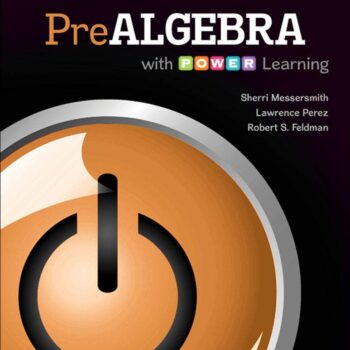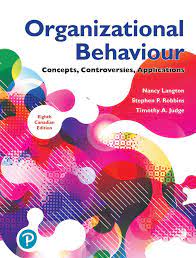
Test Bank For Accounting Information Systems 13th Edition By Marshall-B.-Romney
Original price was: $55.00.$25.00Current price is: $25.00.
Digital item No Waiting Time Instant DownloadISBN-13: 978-0133428537 ISBN-10: 0133428532
In the 13th Edition for Accounting Information Systems, Marshall B. Romney remains your basic study guide for learning accounting systems. This test bank has been set up in such a way that complements your education by providing practical illustrations, MCQs, and explanations that help in the comprehension of accounting alone.
Key Features of the Accounting Information Systems Test Bank
Here, one is provided with a variety of tests and solutions that are offered with the main concepts of concentrating on – security policies and controls, data movement diagrams, and process cycles. All sections comply with course requirements and assumptions targeting comprehension of the topic objectives as well as system materials, plans, and repertoires of business cycles and defrauded.
How This Test Bank Helps You Succeed
Accounting Information System 13th Edition test bank provides information in the form of questions and help answers which aim to consolidate the information to internalize the most complex of ideas. Control aim is on different aspects like control objectives, audit trail, and even accounting system, this is relevant in addressing the idea of how technology is linked to accounting principles. With this resource, doubts in exam-type questions are dealt with and the concept systems analysis with a core of financial reporting is mastered.
Boosting Your Study Patterns
When practicing with the test bank, you focus on strategies that are incorporated within the format of the actual examinations. This bank comprises of the following:
- Case studies on data processing and cloud accounting
- Risk management and internal control scenarios
- Systems security and network control exercises
These features make it easy to pinpoint the dimensions where more practice is required for an effective understanding of accounting concepts.
Developed for Practical Use
Applying concepts rather than just rote memorization of terms is what a test bank does. Database management, ethical accounting practices, systems design – there is a practical application in every question. It is a comprehensive approach that enables you to prepare for an exam and, perhaps more importantly, practical applications of financial analysis and systems implementation as well.
Effective Study Strategies
As it provides the test bank students can experience implementing basic skills that need to be mastered, for instance, AIS documentation, implementing data security measures, or integration of fraud deterrent schemes. It is most appropriate for students who wish to enhance their decision-making and problem-solving capabilities in Accounting information systems.
Summary
The book Test Bank for Accounting Information Systems, 13th Edition by Marshall B. Romney is full of questions and answers that make it easy to understand concepts like internal control and system design or data flow diagrams. It’s also an easy way to review before tests, reinforce technical skills, and foster self-assurance in accounting systems management.
Test Bank For Accounting Information Systems 13th Edition By Marshall-B.-Romney
Accounting Information Systems, 13e (Romney/Steinbart)
Chapter 3 Systems Documentation Techniques
3.1 Prepare and use data flow diagrams to understand, evaluate, and document information systems.
1) Graphical representations of information are often supplemented by
A) narrative descriptions.
B) relevant e-mail communications.
C) logic charts.
D) oral descriptions from management.
Answer: A
Objective: Learning Objective 1
Difficulty: Easy
AACSB: Analytic
2) All of the following are guidelines for preparing data flow diagrams except
A) show the most detail in the highest-level DFD.
B) include all storage files, even if they are only temporary.
C) uniquely name all data flows.
D) sequentially number process bubbles.
Answer: A
Objective: Learning Objective 1
Difficulty: Moderate
AACSB: Analytic
3) The Sarbanes-Oxley Act requires independent auditors to
A) create flowcharts to document business processes.
B) understand a client’s system of internal controls.
C) establish effective internal controls.
D) prepare and understand all types of system documentation.
Answer: B
Objective: Learning Objective 1
Difficulty: Moderate
AACSB: Analytic
4) The passage of the Sarbanes Oxley Act
A) made documentation skills even more important.
B) requires public companies to prepare an annual internal control report.
C) mandates that auditors must be able to prepare, evaluate, and read documentation tools such as flowcharts.
D) all of the above
Answer: D
Objective: Learning Objective 1
Difficulty: Easy
AACSB: Analytic
5) Which of the following is not a true statement?
A) Documentation tools save an organization both time and money.
B) Documentation tools are used extensively in the systems development process.
C) Data flow diagrams and flowcharts are the two most frequently used systems development documentation tools.
D) Data flow diagrams and flowcharts are difficult to prepare and revise using software packages.
Answer: D
Objective: Learning Objective 1
Difficulty: Easy
AACSB: Analytic
6) A data flow diagram
A) is a graphical description of the source and destination of data that shows how data flows within an organization.
B) is a graphical description of the flow of documents and information between departments or areas of responsibility.
C) is a graphical description of the relationship among the input, processing, and output in an information system.
D) is a graphical description of the sequence of logical operations that a computer performs as it executes a program.
Answer: A
Objective: Learning Objective 1
Difficulty: Easy
AACSB: Analytic
7) In a DFD, a “data sink” is also known as a
A) data store.
B) transformation process.
C) data flow.
D) data destination.
Answer: D
Objective: Learning Objective 1
Difficulty: Easy
AACSB: Analytic
8) In preparing a DFD, when data are transformed through a process, the symbol used should be
A) a circle.
B) an arrow.
C) a square.
D) two horizontal lines.
Answer: A
Objective: Learning Objective 1
Difficulty: Easy
AACSB: Analytic
9) In general, a data destination will be shown by
A) an arrow pointing away.
B) an arrow pointing in.
C) arrows pointing both ways.
D) no arrows, only two horizontal lines.
Answer: B
Objective: Learning Objective 1
Difficulty: Easy
AACSB: Analytic
10) In a data flow diagram of the customer payment process, “update receivables” will appear above or in
A) a square.
B) a circle.
C) two horizontal lines.
D) none of the above
Answer: B
Objective: Learning Objective 1
Difficulty: Easy
AACSB: Analytic






